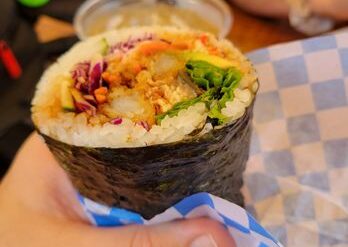Embrace Nature: A Comprehensive Guide to Bird Feeders for Parents and Kids
Hey there, nature-loving parents! Are you looking to sprinkle a little magic into your garden, entice some chirpy pals, and give your children an enchanting nature lesson right in your backyard? Bird feeders are your ticket to a captivating parade of feathers and songs. We’re here to guide you through the ins and outs of selecting, installing, and maintaining the perfect bird feeder for your family’s feathery visitors. So grab a comfy seat and let’s dive into the world of backyard birding – it’s going to be absolutely tweet-tastic!
Why Introduce a Bird Feeder to Your Home?
Before we flutter further into the details, let’s talk about why bird feeders are such an amazing addition to any home. Not only do they provide an essential source of nutrition for birds, especially during the harsher months, but they also:
- Foster a love of nature: Bird feeders offer an excellent way for kids to learn about different bird species, their habits, and the ecosystem. It’s hands-on science right outside your window!
- Promote outdoor activity: Setting up and caring for a bird feeder encourages the whole family to spend more time outdoors, which is great for everyone’s health and well-being.
- Support local wildlife: By providing a steady food source, you’re helping your local bird population thrive, which has positive effects on the natural balance of your area.
Choosing the Right Bird Feeder
Now, let’s talk about the nuts and bolts of finding the perfect bird feeder. There’s a wide variety of feeders available, and the one you choose depends on the types of birds you’d like to attract and the layout of your backyard.
- Tube Feeders: Great for small birds like finches and chickadees, tube feeders keep the seeds fairly dry and are tough for squirrels to raid.
- Hopper Feeders: These resemble little houses and can attract a wide range of birds, including sparrows, finches, and cardinals. They’re usually easy to fill and clean.
- Platform Feeders: Perfect for attracting larger birds, platform feeders are open, making them very accessible – just remember, they can also attract other wildlife like squirrels and chipmunks.
- Suet Feeders: If you’re interested in attracting woodpeckers or nuthatches, suet feeders filled with fat-rich suet cakes are a fantastic option.
- Hummingbird Feeders: Want to see these tiny, vibrant creatures zipping around? A hummingbird feeder with sweet nectar will be irresistible to them.
Location, Location, Location: Where to Place Your Bird Feeder
Just like in real estate, location is key when it comes to bird feeders. Think visibility for both you and the birds. The feeder should be placed in a quiet area where birds feel safe, but also close enough to windows so your family can enjoy the show. However, be mindful of the possibility of birds accidentally flying into windows and take precautions to prevent this.
- Near Natural Cover: Place the feeder close to bushes or trees to provide a quick escape for birds if predators are near, but not so close that squirrels can easily jump onto the feeder.
- Avoid High Traffic Areas: A feeder should be away from the hustle and bustle of your garden to prevent startling the birds.
- The Right Height: Birds feel safest when the feeder is positioned at least 5 feet off the ground, protecting them from many ground predators.
Maintaining Your Bird Feeder: Keep it Clean and Stocked
Maintenance is crucial for the health of your winged guests and the longevity of your bird feeder. Ensuring a consistent supply of fresh seeds will keep birds coming back for more. Regular cleaning will prevent the spread of disease among the bird population. A monthly scrub with hot water and mild soap, followed by thorough drying before refilling, should do the trick.
Also, take note of the types of seeds you’re offering. Different birds have different preferences. Black oil sunflower seeds are a hit with a wide variety of birds, while nyjer seeds are a favorite among finches. Suet cakes are beloved by insect-eating birds, and sugar water mixtures will attract hummingbirds like a charm.
Now that you’re equipped with all this handy knowledge on bird feeders, you’re all set to turn your backyard into a bird paradise. From the joy of watching a colorful finch to the awe of a visiting blue jay, every moment will enrich your family’s connection to nature and each other. And remember, a little birdie told us that patience is key. It might take a little time for birds to discover your new feeder, but once they do, get ready for endless moments of feathered fun!
Stay tuned for more tips on how to make your bird feeder the hot spot of the neighborhood and keep those happy chirps coming. Your adventure into the world of birding is just beginning, and we can’t wait to share it with you. The sky’s the limit when you’re making feathered friends!

5 Things Parents Should Know in Preparing for Bird Feeders
Inviting feathered friends into your yard with a bird feeder is both a delight and a responsibility. Here are five essential tips to ensure your bird feeding experience is top-notch for both you and your avian guests:
1. Safety First
Consider the safety of the birds when placing your feeder. Keep it away from areas where predators like cats can easily reach. If you have pets, make sure they cannot disturb the birds. The feeder should also be positioned to minimize the risk of window collisions. Applying decals or using bird-safe window films can help prevent such accidents.
2. Understand the Commitment
Realize that once you start feeding birds, they may come to rely on your feeders, especially during winter months when natural food sources are scarce. Be prepared to refill feeders regularly and clean them to ensure the well-being of your visitors.
3. Quality Feed Makes a Difference
Invest in high-quality bird feed to attract a larger variety of species and provide them with better nutrition. Cheaper mixes may contain filler seeds that many birds will simply discard, making a mess of your feeding area and wasting your money. Aim for a blend specific to the species you wish to attract or use single seed types known for wide appeal, like black oil sunflower seeds or safflower.
4. Weather Considerations
Be aware of your local climate. In wetter regions, you’ll need to ensure your feeder is waterproof or has adequate drainage to prevent seed spoilage. Similarly, in regions with snow, you may need to ensure that the feeder is accessible and the food is not buried under snowfall.
5. Be a Responsible Host
Finally, it’s important to be responsible bird hosts. This means not only providing food but also water and shelter. A nearby birdbath or a small pond can provide a water source, while leaving some natural areas in your garden unkempt can offer nesting materials and refuge. Be mindful of when and how you apply lawn chemicals and pesticides, as they can be harmful to birds and the environment.
With these insights in hand, parents can ensure that their garden bird feeders serve as safe, enjoyable hubs for local birds. There’s nothing quite like bonding with your kids over the shared experience of caring for wildlife and witnessing the beauty of birds up close. Plus, you’ll be fostering a new generation of nature enthusiasts and responsible ecological citizens. What a wonderful way to give wings to your family’s love for our planet!
Remember, the right approach to bird feeding can provide limitless educational opportunities and countless hours of enjoyment for you and your family. Watching your children’s faces light up when they spot a new bird species at the feeder is a joy like no other. So, take these tips, set up your bird haven, and wait for the tweets and chirps to fill the air in your own backyard.
For more great articles please see here. For more information see here
Disclaimer
The articles available via our website provide general information only and we strongly urge readers to exercise caution and conduct their own thorough research and fact-checking. The information presented should not be taken as absolute truth, and, to the maximum extent permitted by law, we will not be held liable for any inaccuracies or errors in the content. It is essential for individuals to independently verify and validate the information before making any decisions or taking any actions based on the articles.




